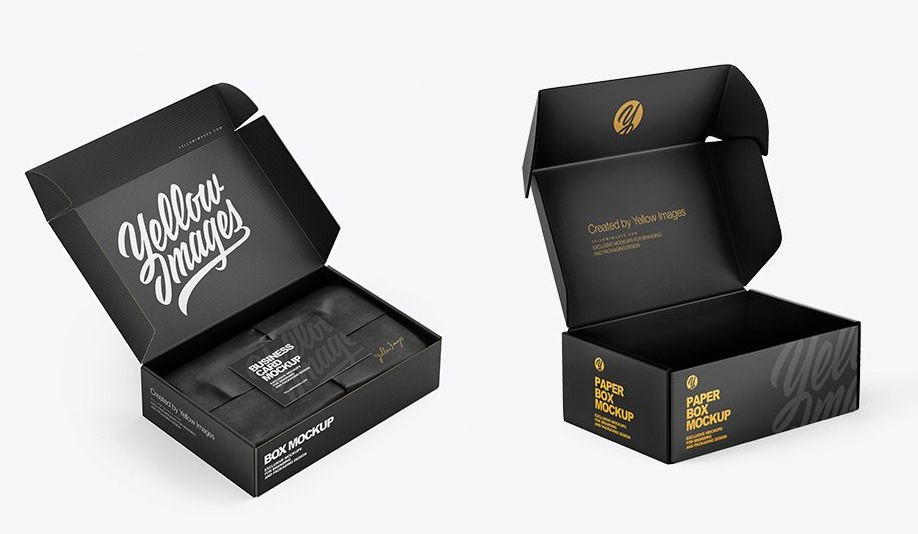In today’s competitive market, businesses are constantly seeking innovative ways to stand out and leave a lasting impression on their customers. One effective strategy that has gained momentum in recent years is personalised packaging. From custom boxes to branded tissue paper, personalised packaging offers businesses a unique opportunity to enhance their brand identity and elevate the customer experience.
Benefits of Personalised Packaging
Brand Recognition
Personalised packaging serves as a powerful branding tool. By incorporating unique designs, logos, and messaging, businesses can reinforce their brand identity and increase brand recognition. When customers receive a package that is tailored specifically to them, it creates a memorable experience and strengthens brand loyalty.
Customer Engagement
Personalised packaging has the ability to captivate and engage customers on a deeper level. Whether it’s through custom labels, handwritten notes, or special inserts, businesses can create a sense of exclusivity and personal connection with their customers. This level of engagement not only fosters loyalty but also encourages repeat purchases and referrals.
Increased Sales
Studies have shown that personalised packaging can have a significant impact on purchasing behavior. When products are presented in visually appealing and unique packaging, customers are more likely to perceive them as valuable and desirable. As a result, personalised packaging can lead to increased sales and higher conversion rates.
Types of Personalised Packaging

Custom Boxes
Custom boxes are one of the most popular forms of personalised packaging. They can be tailored to fit the specific dimensions and design requirements of each product, ensuring a perfect fit and maximum protection during transit. Custom boxes can also be printed with brand logos, colors, and other branding elements to create a cohesive and professional look.
Branded Tissue Paper
Branded tissue paper adds an extra layer of sophistication and elegance to product packaging. By incorporating custom designs and colors, businesses can elevate the unboxing experience and make a memorable impression on customers. Branded tissue paper can also be used to protect fragile items and add a touch of luxury to the packaging.
Custom Labels and Stickers
Custom labels and stickers are versatile and cost-effective options for adding a personal touch to packaging. They can be used to display product information, promote special offers, or simply add a pop of color to plain packaging. Custom labels and stickers can be printed in various shapes, sizes, and finishes to suit any branding style.
Design Considerations
Branding Consistency
When designing personalised packaging, it’s important to maintain consistency with the overall brand identity. This includes using the same colors, fonts, and imagery across all packaging materials to create a cohesive and recognisable look. Consistent branding helps to reinforce brand identity and build trust with customers.
Target Audience
Personalised packaging should be designed with the target audience in mind. By understanding the preferences and interests of their customers, businesses can create packaging that resonates with their target demographic and enhances the overall customer experience. Whether it’s through playful graphics for a younger audience or minimalist designs for a more sophisticated clientele, personalisation should always be tailored to the specific needs and preferences of the target audience.
Packaging Material
In addition to design considerations, businesses must also carefully select the right packaging materials. From eco-friendly options like recycled cardboard to premium materials like luxury paper and fabric, the choice of packaging material can have a significant impact on the perceived value and quality of the product. By choosing sustainable and high-quality materials, businesses can not only enhance their brand image but also appeal to environmentally conscious consumers.
Implementation Process
Design Phase
The first step in implementing personalised packaging is the design phase. This involves working closely with graphic designers and packaging experts to develop customised packaging solutions that reflect the brand identity and meet the specific needs of the business. During this phase, factors such as packaging dimensions, materials, printing techniques, and budget constraints are carefully considered to ensure a successful outcome.
Production Phase
Once the design is finalised, the production phase begins. This typically involves sourcing the necessary materials, printing the packaging components, and assembling the final products. Depending on the complexity of the design and the quantity of packaging needed, production timelines may vary. Quality control measures are also implemented during this phase to ensure that the finished products meet the highest standards of quality and consistency.
Quality Control
Quality control is an essential aspect of the implementation process. This involves conducting thorough inspections of the packaging materials and finished products to identify any defects or inconsistencies. By adhering to strict quality control standards, businesses can ensure that their personalised packaging meets the expectations of their customers and reflects positively on their brand reputation.
Case Studies
Successful Examples
Numerous businesses have successfully implemented personalised packaging strategies to enhance their brand identity and customer experience. Companies like Glossier, Birchbox, and Coca-Cola have leveraged custom packaging to create memorable unboxing experiences and foster strong emotional connections with their customers. By incorporating unique designs, personalized messages, and interactive elements, these brands have been able to differentiate themselves from competitors and drive customer engagement and loyalty.
Future Trends in Personalised Packaging
Sustainability
As consumers become increasingly environmentally conscious, sustainable packaging solutions are expected to become more prevalent in the future. From biodegradable materials to reusable packaging designs, businesses are exploring innovative ways to reduce their environmental footprint and appeal to eco-conscious consumers. Sustainable personalised packaging not only aligns with consumer values but also demonstrates a commitment to corporate social responsibility.
Conclusion
In conclusion, personalised packaging offers businesses a unique opportunity to differentiate themselves in the market and create memorable experiences for their customers. By incorporating custom designs, branded materials, and interactive elements, businesses can enhance brand identity, foster customer engagement, and drive sales. As consumer preferences continue to evolve, personalised packaging will remain a powerful tool for building brand loyalty and staying ahead of the competition.


